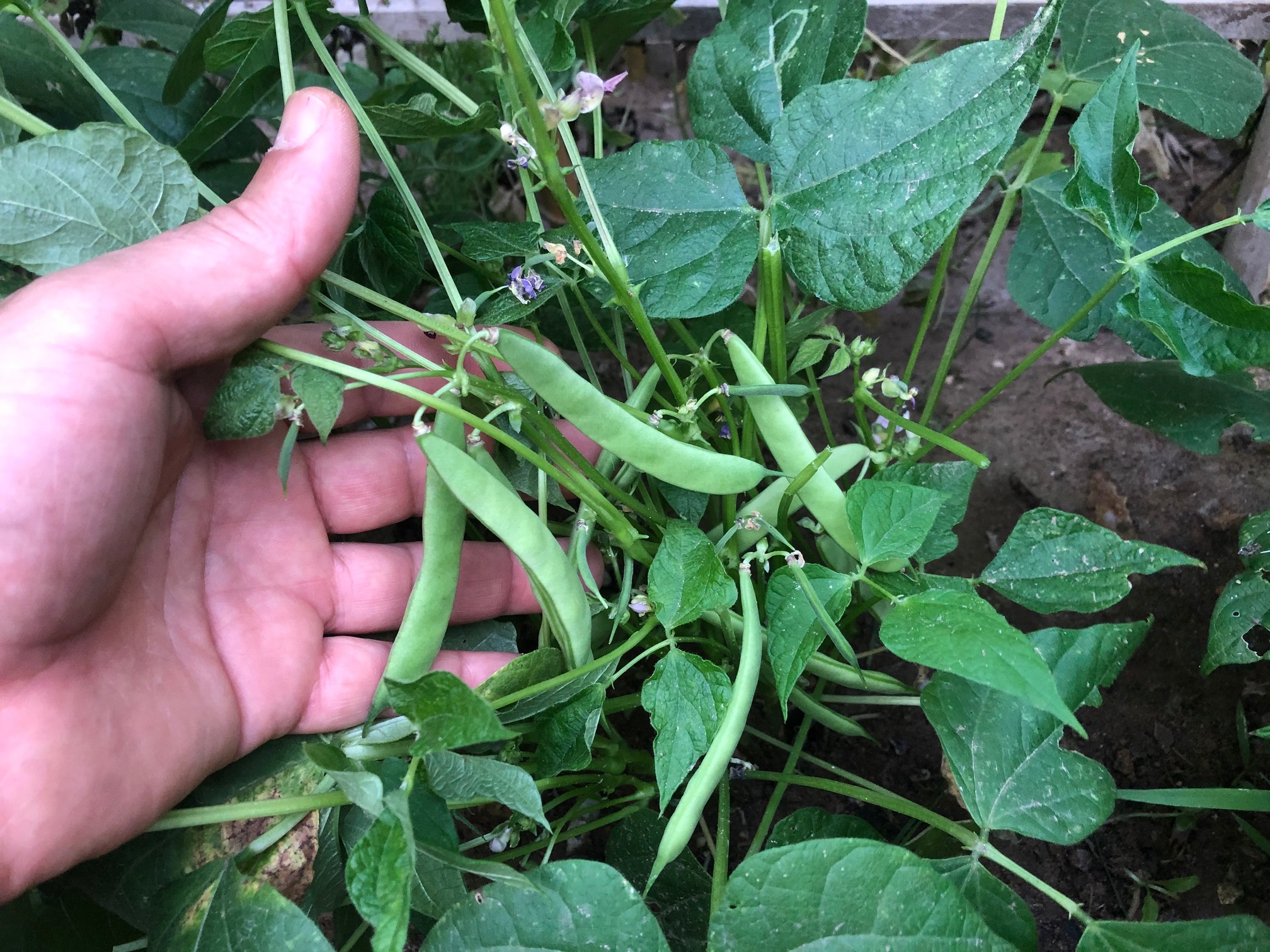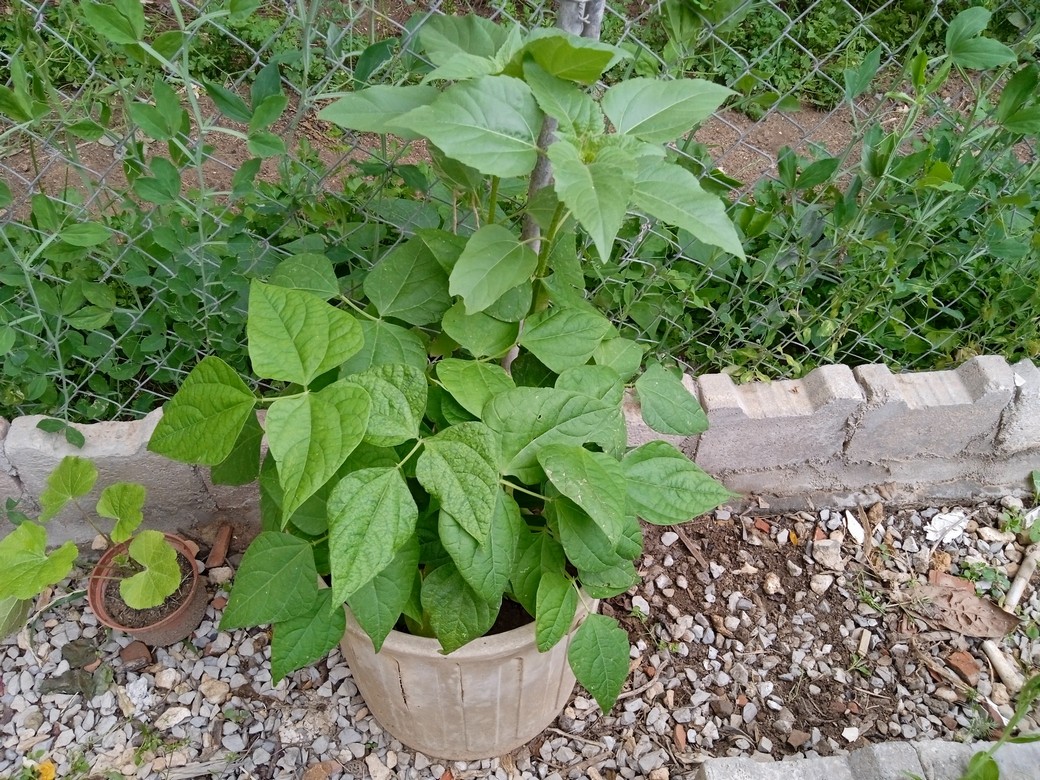Table of contents
Current facts
Black turtle beans are botanically a part of Phaseolus vulgaris and a member of the Fabaceae family. The Fabaceae or Leguminosae are a large and economically important family of flowering plants, which is commonly known as the legume, pea, or bean family.
What are black turtle beans?
Black turtle beans are originated in Central and South America. They’re the same species as snap beans, but are grown for their dried seeds. That's why black turtle beans take longer than snap beans to go from seed to harvest. They need about 90 days versus snap beans, which are harvested 50 days from planting. The plants are super productive. A single plant can produce up to 30 pods, each containing 6–8 seeds. Black turtle beans are a warm season vegetable and grown between the spring and fall frost dates. These kinds of beans are one of the healthiest and most versatile types of beans.
Black turtle beans history
Spread from South America to Asia and Africa in the late 1700s by Spanish and Portuguese traders, black turtle beans have just recently come to popularity in America and the UK. These vividly attractive beans are tasty and healthy. Researchers have found that this fiber, iron, and protein rich legumes improve digestive and hearth health.
Black turtle beans description
Black turtle bean is a bush-type bean with purple flowers. Produces green beans. Mature plants will reach a maximum height of 2 to 3 feet. Beans can be harvested young and eaten in their entirety, or left on the plant to dry until the seeds rattle in the pod.
Nutritional value of black turtle beans
Black turtle beans are one of the healthiest and most versatile types of beans. They are rich in protein, fiber, potassium, selenium, iron, folate, manganese, vitamins A, C and K, and calcium. The nutrients found in these beans are cited as being beneficial to the heart, colon, and general stomach health.
How to grow black turtle beans
Black turtle beans are a great bean variety for home gardeners, known for their productive, high yields and incredible flavor. They have good heat and disease tolerance and are very easy to grow, especially for beginner gardeners. These kinds of beans grow in a bushy habit, rather than growing up with supports, like pole beans. This makes them very easy to tuck around the garden, with no worries about having to set up trellises or poles.
These kinds of beans are quite productive, and continued producing pods as long as you kept picking them. One of the advantages of growing black turtle beans is that they can be used as either fresh beans with edible pods, if picked young, or as dried beans if they are allowed to mature on the plant.
Like many beans, black turtle beans are not tolerant of frost and seeds should be planted well after the ground has thawed for the season.
Black turtle bean seeds
When to grow black turtle beans
Like most types of beans, black turtle bean seeds are sown in spring once the risk of frost has passed. The most important point about growing all varieties of beans is not to plant the seeds too early. They will rot in cool, damp soil. You have to plant your beans after all danger of frost is past. The seeds germinate best in warm soil with a temperature between 68 and 80 F (20 to 27 C). Remember, don’t try to sow the seeds into the garden too early as soil that is excessively cool or wet promotes rot, and you will lose your seeds!
Where to grow
Black turtle beans prefer a sunny, well-drained spot, and like fertile soil that is well draining, rich in organic matter, and a fairly neutral PH level (around 6.0-7.0). They grow best in fertile soil, preparing the soil with compost and manure before planting is highly recommended!
Watch how to use composted chicken manure video
How to sow black turtle bean seeds
- After all risk of frost has passed, sow black turtle bean seeds in a location with direct sun and soil with good drainage. You may want to soak the seeds overnight before sowing to get a head start on germination. This is optional, but it will help to speed the process.
- Dig individual planting holes with a trowel and drop in 5 to 6 seeds per hole.
- Cove the seeds with soil.
- Water the soil lightly after sowing the seeds and then regularly, until they sprout.
- Make the first sowing one week before your last expected frost date, then continue sowing every three weeks until midsummer.
- Black turtle seeds will sprout in about 8–16 days, depending on temperature conditions. When sprouted, they make a beautiful dark purple sprout. Once they have pushed up, spread mulch lightly over the surface of the soil to help conserve moisture.
Watch how to grow organic black beans video
- Black turtle beans grow well when mulched.
- Mulching helps to keep down weeds, reduce pests, hold moisture in the soil, and reduce risk of disease for the plants.
- Once the plants begin to set flowers, you’ll need to water moderately. Water your plants once a week, and make sure that the soil is moist not wet to ensure good growing condition for maximum production. When watering, try to avoid getting the leaves wet. Always water at the base of plants, and avoid over head watering because excess water on the foliage can promote fungus or other damaging conditions that beans can be susceptible to. It's the best watering practice in the garden. Most types of beans are somewhat drought resistant, but check the surface of the soil frequently and water when the top layer has become dried out.
- Once established, black turtle beans don’t need supplemental fertilizer, as they fix their own nitrogen.
Crop rotation
A three-year rotation will reduce susceptibility to diseases in the garden soil.
Companion plants
Black turtle beans grows well with beets, cabbage, carrots, cauliflower, celery, corn, cucumbers, eggplants, marigolds, peas, radishes, rosemary, chamomile and sunflowers.
Growing black turtle beans in containers
Black turtle beans don’t require a lot of space and soil and tend to grow very well in confined spaces such containers. Consistent watering is important for maximum yield. Once the beans begin to make flowers, it is especially important to keep the soil constantly moist. If the plants get too dry, they will drop flowers. Because of their short stature, they require only about 7 inches of soil to grow, and as they aren’t vining like pole beans, they require very little maintenance.
Harvesting beans
If you want to use black turtle beans as a dry shell beans, you need to just leave them on the plant until they dry out and then harvest them. Black turtle beans generally reach maturity and are ready for harvest 90 days after planting. You will know your pods are ready to harvest when they become yellow and dry. Expect each plant to produce about 30 pods, with each pod having 6 to 8 seeds.
You can start harvesting anytime after the beans form. Harvest by gently pulling each bean from the vine or by snapping them off at the vine end. For the best flavor and nutritional value, pick your beans when they're young and tender.
Once you’ve harvested the pods, crack them open to remove the black, shiny beans inside. Spread the beans out on a flat surface and let them dry for a couple of days before cooking or storing. Your black beans will keep for up to a year if you store them properly. Keep them in a cool, dry place, and place them in an airtight container to protect them from moisture and insects.
Know When and How to Harvest Black Beans to Ensures Their Full Flavor and Nutritional Content
How to preserve black turtle beans
The dried beans can be used like other beans in soups, salads, and many other dishes. There are multiple ways to preserve beans for later enjoyment. My top method of bean preservation is canning, and another great way to preserve them is to freeze them.
Storing shelled black turtle beans
- You will be able to store your dry beans for eating as well as save some of the seeds for the next year as these are an heirloom variety and will reproduce true to itself.
- Shell the dried pods, then bring the beans inside to dry further in an airy location.
- If stored properly, black turtle beans will keep for up to two years. To store them, simply keep them in a cool, dark, dry location, and place them in an airtight container labeled with the variety and date to protect them from moisture.
If you have never ventured beyond grow one of the favorite beans, I'd encourage you to give black turtle beans a try. These kinds of beans are tasty and high-yielding, they are superfoods packed with protein and anthocyanins, making them a worthy addition to the vegetable garden!
I hope this guide helps you learn how to grow your own organic black turtle beans. Don’t hesitate to ask questions or reach out with any suggestions. So please let us know your thoughts, experiences, or questions in the comments below. If you like this, you can share with your friends!
Want to read:
This web site is a participant in the Amazon Services LLC Associates Program, an affiliate advertising program designed to provide a means for sites to earn advertising fees by advertising and linking to amazon. Some of the links to products on this site are affiliate links. These are products that i've used or recommend based from homesteading experience. I do make a small commission (at no extra cost to you) from these sales.(alert-warning)























